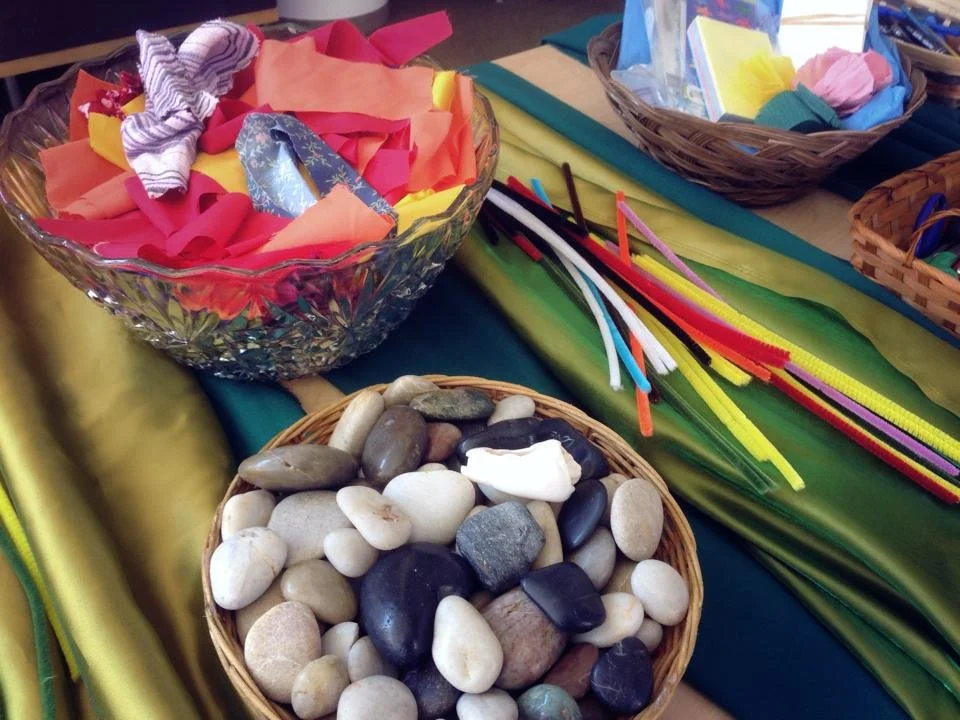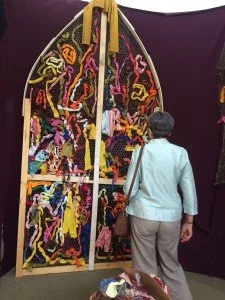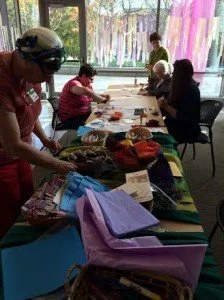Art as Exegesis: Reflections on McCormick Days 2014
11-03-2014
This year’s McCormick Days—an annual gathering of students and alumni that revolves around a central theme—explored how churches and faithful individuals could use art to exegete Scripture, do ministry, and pastor. Rev. Dr. Elizabeth (Lib) Caldwell gave the keynote address, explaining why she had her students use art as a way to interpret texts. The process of creation is visceral and demands something different of the soul and the mind than reading and writing do; students come to a new understanding of theology and Scripture when they are asked to engage with the text in creative ways.
The Scriptural focus for this year’s McCormick Days well a well known Micah passage:
“He has told you, human one, what is good and
What the LORD requires from you:
To do justice, embrace faithful love, and walk humbly with your God” (Micah 6:8; CEB)
Instead of the normal series of academic lectures on each of these precepts, four alumni were invited to create art installations through which attendees could reflect on the Scripture and hear God’s call through it.
For the first command, “do justice”, Rev. Megan Cochran and Rev. Alex Wirth created a chapel space using cream and purple cloths hanging from the ceiling to the floor. They used recycled wood scraps and chicken wire to create the frame of a stained glass window, and threaded colorful scraps of cloth to make the glass. Questions and quotes about social justice, and each individual’s commitment to it, hung around the cloth chapel. Visitors were asked to walk through and reflect on what justice issue God was calling them to, and invited to take a scrap of cloth from the window. After leaving the chapel, the visitors were asked to write their commitment on the scrap of cloth, which was used in closing worship in a re-threading of the window.
It was great to step into a space that invited me to reflect; that was absent of distraction. I was amazed at what came to mind as I stood in front of the window, contemplating which cloth strip to take. It became a very meaningful act. (Sarah Jones, MDiv/MA, 2015)
Just down the hall from Megan and Alex’s installation, Rev. Shawna Bowman had set up her piece: Embracing Faithful Love. Long, slender chains hung from the ceiling in a circle, with several clothespins affixed down their lengths. Outside the circle, Shawna set up a small table with squares of paper, pastel crayons, fine ink pens, and a Fujifilm instant camera. Visitors were asked to create, with these elements, representations of faithful love and then clip it onto one of the chains. In the center of the circle, visitors were surrounded by many interpretations and expressions of love, embraced by diverse interpretations of a common idea.
Shawna’s micro-gallery was incredible. It was a chance to interact with everyone’s contributions. It was a perfect example of the diversity that the McCormick community embodies. Everyone could find a way to participate in some way. (Kelsey Penn, MDiv, 2016)
Sergio Centeno thought a bit outside the box, and created an installation that could be participated in by people near and far. In the Buchanan Lounge, Sergio set up a craft station where visitors could make their own prayer boxes out of empty match boxes, cloth, construction paper, and stickers. This small box can be carried outside as a constant reminder that the Sacred is found everywhere. Additionally, we were asked to keep engaging with the command to “walk humbly” by taking pictures of sacred places in the city and uploading those pictures to instagram and facebook using the hashtags #walkhumblythecity, #citylabyrinthpath, #prayinthecity. Participants from all over Chicago, and the world, can walk a virtual labyrinth together.
I created this project inspired in the ancient tradition of walking labyrinths as spiritual practice. This project aims to engage people in an active experience of praying; but praying with open eyes and visual stimulus. (Sergio Centeno, MDiv, 2014)
After having the chance to visit every installation, attendees and artists sat down to reflect on their experiences. Many people felt like they had come to new understandings of the texts and how God was speaking to them individually. By participating in these art installations, we engaged with the Scripture in a way that academic study or listening to a sermon just cannot offer. Art taps deep into our bodies and our souls, drawing out reactions and understandings that would otherwise go unnoticed. Some people were reminded of experiences decades ago of participating the civil rights movement, and how they felt that they were doing God’s work. Others were deeply moved by the diverse expressions of love that they saw in Shawna’s installation, and came to a new understanding of what the command to “embrace faithful love” entails. Still others felt both emotionally jolted and yet centered in the chapel of justice.
The whole experience reminded me of why I am so thankful to study at this seminary. I came to McCormick Theological Seminary because it was a place that I could critically engage Scripture, theology, and my own faith. All of this, I thought, would be through traditional academic study, how else could we possibly understand our place in the world, our history, and our traditions? McCormick has challenged me to think outside the box, to engage in my faith and with the Spirit in a myriad ways. In my four years at seminary, I have seen that revelation, worship, and community engagement can come from creative endeavors, and that our faith is richer for it.
A visitor contemplates the stained glass window in the “Do Justice” Chapel at McCormick Days
Attendees were encouraged to create an image of faithful love and attache them to the installation “Embracing Faithful Love”
Participants at the “Walk Humbly” installation create their own sabbath-boxes to help them reorient themselves to the sacred in their day to day lives





